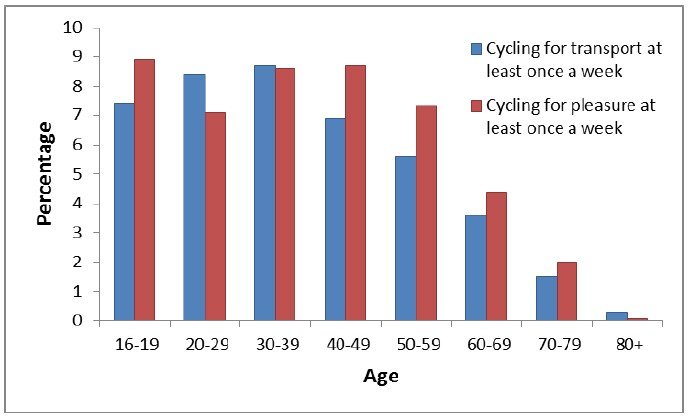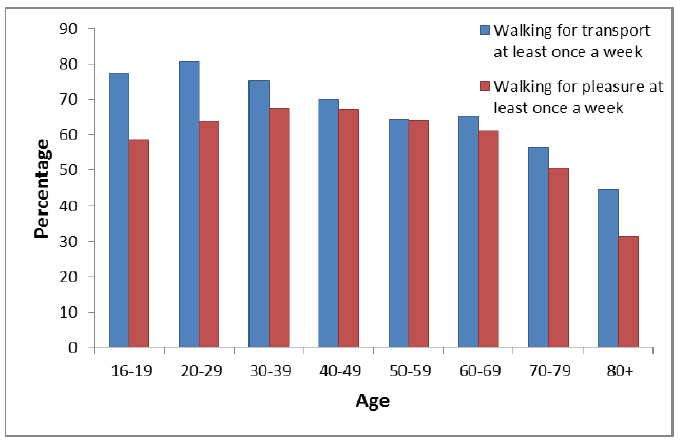7. Walking And Cycling
26 September 2017 - Transport and Travel in Scotland 2016
7. Walking And Cycling
This section contains analysis and headline findings from the Scottish Household Survey questions on cycling and walking (including the Travel Diary part of the survey).
Cycling
Distance cycled on all roads is estimated to have increased from 343 million vehicle kilometres in 2015 to 352 million vehicle kilometres in 2016. [DfT traffic estimates 2016] Traffic estimates indicate only the broad level of traffic, so year-on-year comparisons should be made with caution as they are estimated based on a small cross-section of Scottish roads.
One per cent of journeys had cycling as the main mode of transport, a similar proportion to 2015. [Table SUM1 & TD2] The average (mean) cycling journey was 7.6 km in length, using road network distance. [Table TD25a]
Just less than three (2.6%) per cent of adults usually cycle to work, compared to 2.2 per cent in 2015. Just less than two per cent (1.4%) of children cycled to school. [Tables 7, 15 & SUM1]
Figure 2: Percentage of adults cycling at least once per week by age, 2016

Bicycle access
A third (34%) of households had access to at least one bicycle for adult use in 2016. Eighteen per cent had access to two or more. [Table 18]
Household access to bikes increased with household income and household size; 60% of households with an income of £40,000 or more have access to one or more bikes, compared to 19% of households with an income up to £10,000. Bicycle access was higher in rural areas than urban areas. [Table 18]
Walking
Off all journeys reported in the SHS travel diary, 24 per cent had walking as the main mode, an increase from 2015. Twelve per cent of adults usually walk to work and 52 per cent of children usually walk to school as their main mode of transport. [Tables 7, 15 & SUM1]
The median walking journey was just under one kilometre in length. [Table TD5a]
Two thirds of people had walked as a means of transport on at least one day in the previous week. Twenty three per cent had walked as a means of transport on 6-7 days. Sixty one per cent of people had walked for pleasure at least once in the last week, an increase from 2014. [Table 3a]
Frequency of walking decreased with age (77% of those aged 16-19 had walked to go somewhere in the last week, compared to 44% of those aged 80+). [Table 25]
Figure 3: Percentage walking at least once per week by age, 2016

When respondents were asked what discourages them from walking more, the main reasons given, other than nothing (54%) were weather (18%) and health (16%). [Table 43]